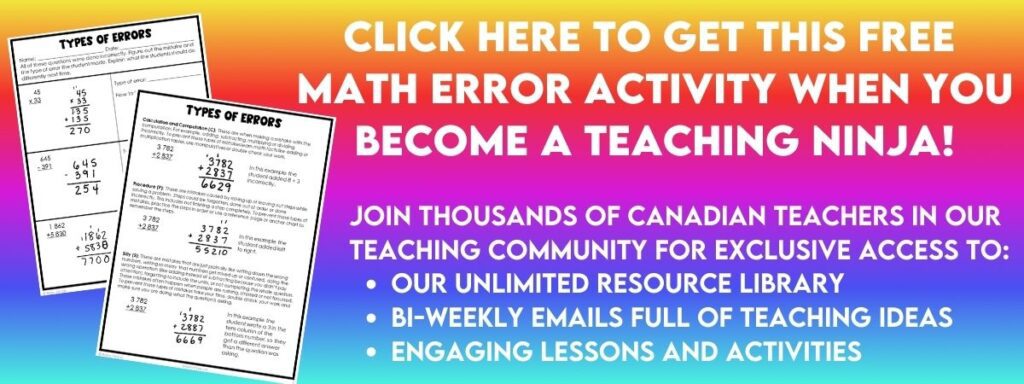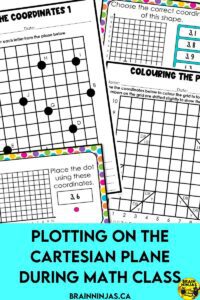
The Cartesian plane was named after the mathematician René Descartes. This is now an outcome in the Alberta Mathematics Curriculum and somehow we made it through all our university math classes without needing that information.
The plane is a fundamental tool that can represent relationships between two variables. Most of that goes right over the heads of elementary students, but if you talk to them about the game Battleship, most realize they’ve already been using the Cartesian plane. Come learn how we teach the quadrants and coordinates.
Understanding the Cartesian Plane
The first step in teaching the plane is getting your students to understand what it is.
Introduce the Plane
The First Quadrant
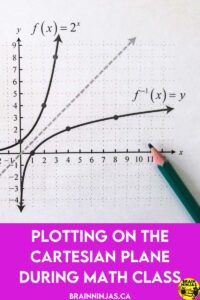
Focus on the first quadrant. However, we show students where the plane is compared to the other planes with a simple drawing. Don’t include the coordinate numbers yet.
Once students are familiar with negative numbers, the other planes make more sense. Skip mentioning the other planes if that helps your students or they don’t know negative numbers. If your students are ready for the information, number the quadrants starting in the first plane and working clockwise. Use Roman numerals to label the coordinates. Roman numerals prevent the numbers from being confused for coordinates.
Explain where the x and y axes are located. Draw a simple plane with the axes. Show how the axes are numbered. Both axes are positive numbers in the first quadrant. Emphasize that the point (0, 0) is the origin (at the centre of the four planes), and the x-axis and y-axis intersect at this point.
It helps to draw a plane and number the axes with your students. If you don’t want to draw one, this is a pretty useful site.
Explain Coordinates
Start by explaining the concept of coordinates, consisting of an ordered pair (x, y). When playing Battleship, the ordered pairs are a letter and a number. This helps keep the coordinates organized. Prevent mixing them up during the game. However, mathematicians use numbers in ordered pairs. This can confuse students, so we use a simple reminder. The y goes high. This reminds students that the y-axis is the vertical axis. The x,y pair is always alphabetical. This is usually helpful to remind students.
It might be helpful to your students to make a mini anchor chart with (x,y) and Y goes high. Your students can help make it.
Read Coordinates
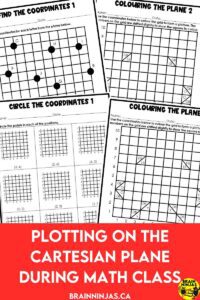
Teach students how to read coordinates by identifying the x-coordinate first (horizontal position) and then the y-coordinate (vertical position). Engage students with interactive activities where they practice reading coordinates from given points.
Provide real-life examples of coordinates, such as mapping locations on a treasure map or plotting the positions of landmarks in a city. It even helps to bring in the game Battleship. Put tape over the letters and write numbers. You can even add a label for the x and y axis. Students can practice reading coordinates.
Plot Points
Demonstrate how to plot points on the Cartesian plane by following the coordinates provided. Encourage students to use graph paper or digital graphing tools to practice plotting points accurately.
Organize hands-on activities where students physically move around a grid to plot points. For example, create a life-size Cartesian plane on the classroom floor using masking tape, and have students take turns plotting points by standing on the grid.
Create a Reference Page
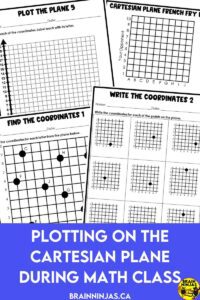
We use our interactive math units to teach the Cartesian plane as part of our geometry units. Each of our units includes a complete lesson plan, student templates to make a reference page (in a cut and paste and a no-cut version), worksheets, activities and assessments.
Geometry Grade 5 Interactive Unit can be found on TpT ($USD) or our BN Shop ($CAN).
Geometry Grade 5/6 Interactive Unit: This is designed for combined classes. Lessons are taught together but include options to differentiate for the grade levels. It also saves teachers who teach combined grades time and money. Find it on TpT ($USD) or our BN Shop ($CAN).
Geometry Grade 6 Interactive Unit can be found on TpT ($USD) or our BN Shop ($CAN).
Practice Reading and Plotting Coordinates
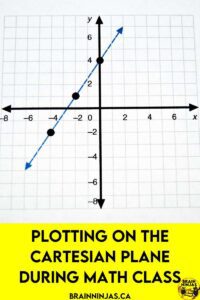
We use worksheets to help practice reading and plotting ordered pairs on the first quadrant of the Cartesian plane. Our worksheets come in a variety of styles and include different questions than those included in our math units. If you’re looking for some fun ways to use your worksheets, check out Math Worksheet Games Your Students Will Love.
Cartesian Plane (First quadrant) on TpT ($USD) or our BN Shop ($CAN).
Cartesian Plane (More complex first quadrant) on TpT ($USD) or our BN Shop ($CAN).
Make Mistakes
Take some of the worksheets and intentionally create mistakes for your students to find and correct. Students love to find errors from the teacher. If you need ideas for error analysis, check out this free activity. If you’re already a ninja, find it in the Resource Library. Not a ninja yet? Sign up for our email list and we’ll send it to you for free.
Do You Teach Math?
- How to Unfold Geometry: Books to Shape Your Unit
- How to Help Your Students Master Decimal Operations
- 7 Ways to Upgrade Your Fraction Strategies
- How to Demystify Math With These 7 Algebra Activities
- Conquer Math With These Proven Multiplication Strategies
- How to Make Teaching Patterns Painless
- Amazing Measurement Activities to Stretch Math
- How to Teach Students to Tell Time
- How to Teach Successful Long Division Strategies
- Ways to Bring Graphing Activities into Your Classroom Daily
- Mastering the Angles: Innovative Approaches to Teaching Geometry Concepts
- How to Teach Rounding Numbers
- How to Teach Integers With Positive and Negative Numbers
What are some of the activities you do to teach and review the Cartesian plane? We’d love to hear about them in the comments below.

